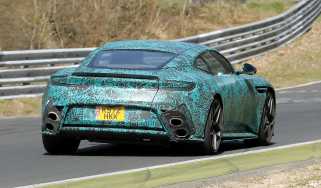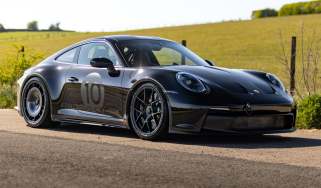The art of oversteer: driving masterclass
It’s not all about showboating – mastering the art of a controlled slide can pay dividends when the unexpected happens
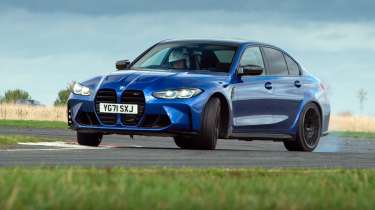
Power oversteer is to driving what the wheelie is to riding. It demonstrates the ability to balance power and grip, and it’s a skill, a technique, and therefore something that can be learned and finessed with practice. It’s a skill worth having because oversteer doesn’t just happen under power, or in rear-drive cars, and the ability to recognise it developing – or even predict when it might happen – and be able to react to it instinctively can be invaluable.
Oversteer is when the rear of the car loses grip in a turn, swings wide and points the nose more to the inside of the turn, literally over-steering it. The opposite is understeer, when the car runs wide of the steered line, which is more easily controlled because the reaction of most drivers is to back off the throttle and keep steering into the corner, which is the correct action. Oversteer requires counter-steer, or opposite lock – turning the steering in the opposite direction to the cornering line and into the skid – which is non-intuitive for many drivers.
> Operating the controls: driving masterclass
The simplest form of oversteer is lift-off oversteer. It can happen with any type of car – front-drive, rear-drive or four-wheel drive – and is most likely to occur when grip levels are lower, such as in the rain or snow. For the purposes of this piece, the cars described either don’t have stability control or have it turned off. Arrive at a corner with a bit too much speed, lift off, turn in and engine braking will cause a dynamic weight transfer, loading the front and unloading the rear, which can cause the rear tyres to lose grip and slip wide.
This typically happens in front-drive cars that are already nose-heavy, but that weight transfer, that lightening of the load on the rear axle, is the first step in inducing power oversteer in rear-drive cars. We’ll come back to that. First we have to stop our front-drive car from spinning into the weeds on the inside of the corner.
Step one, steer where you want to go. Simple, a basic truth… but hard to remember if you’ve just been surprised by the back end stepping out. But if you look where you want to be heading, you’ll turn the steering that way. Doing this is often all that’s required to get the rear back into line. However, if your front-drive car is still rotating, hit the throttle and keep steering where you want to go. This will draw the front through the turn and the rear end will follow even if it has swung a long way round. Indeed, it’s remarkable how big an angle can eventually be gathered up by a good bootful of throttle (check out the footage of Yvan Muller’s incredible save in his BTCC Astra VXR at Thruxton in 2005).
That’s power oversteer, kind of, but what power oversteer means to most of us is a rear-drive car balanced on opposite lock. If you’ve driven a kart, you’ve already started the journey. Every kart circuit has at least one corner where the rear of the kart gets loose. First time through, you might spin, but you quickly learn to steer away from the inside of the corner. As your confidence and competitive spirit grow, you want to maintain momentum, to carry speed, so you keep the power on and apply opposite lock. That’s your first powerslide. OK, it’s probably not the fastest way through the corner – a tiny bit of understeer often is – but that’s an entirely different feature!
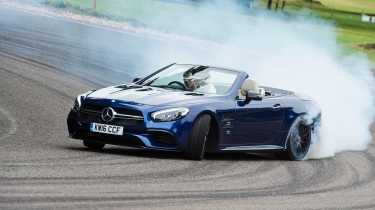
Trouble is, karting delivers oversteer in its purest, simplest form. Cars are bigger and heavier, slower to respond, slower steering… Even just moving up to something like a Caterham, a kart-like road car, complicates the challenge. A great staging post between kart and car would be a skid pan session in a front-engined, rear-drive car. (In the absence of a skid pan, a large, snow-covered car park is a fine substitute.) A slippery surface will allow you to learn, at low speed, how to synchronise opposite lock and throttle to find the balance point and then practise holding a slide and gathering it all up again neatly.
Once you’ve mastered that, you’re ready to move on to a wet track, where speeds will be higher and you have to stay on the grey stuff, meaning your inputs need to be crisper, more considered and more precise. Choose a rear-drive car that is easy to handle: a Caterham Seven, Mazda MX‑5, rear-drive Escort or Capri, or Nissan 350Z.
Your rear-drive car may take some coaxing to slide, simply understeering if you take too much speed in, which is where weight transfer comes in. On the approach to the corner, in quick succession back off and turn in; when you feel the weight transfer to the front, hit the throttle to unstick the rear tyres. Getting the approach speed correct may take a bit of experimentation and won’t be the maximum speed for the corner. As the rear kicks out and you add opposite lock, you’ll need to ease off the throttle a bit to prevent a spin but keep the rear sliding. It may take a run or two to find the throttle balance point.
So there you are, rear wheels spinning, car at a stable angle, small corrections at the wheel and on the throttle maintaining a good line. Congratulations, that’s half the job mastered. The other half is bringing the slide to a neat conclusion. The slide will come to an end when the road speed builds and there isn’t enough power or torque to overspeed the rear wheels or you run out of revs, but the rear regaining grip can be a tricky moment. Just as some cars need a kick to get the tail sliding, so the grip can return with a kick, meaning you have to be precise winding off the opposite lock. Too slow and the rear can bounce back and slide the other way, leaving you playing catch-up with the steering as the car fishtails down the road. In this situation, it’s often best to hit the brakes, steer where you want to go and let anti-lock sort it out.
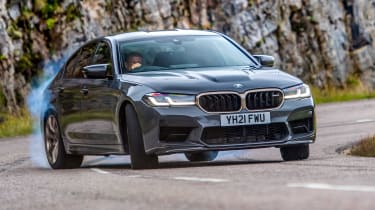
The toughest power oversteer challenge is in the dry. There might be too much grip or too little torque to unstick the rear tyres from warm, dry asphalt in anything other than tight, slow corners, or you might have to use a high approach speed and get momentum to help. Practise in slow turns first to get a feel for the car’s behaviours. In faster corners, weight transfer alone might not be effective. Trail-braking might help; turning in still on the brakes can tuck the nose in and get the rear loose so that a stab of throttle kicks the rear out. Your steering and throttle inputs to balance a car in the dry need to be very accurate, though the bigger challenge can be gathering it all up neatly. Timing the unwinding of opposite lock to achieve a smooth, clean ‘dismount’ from the slide can be the most difficult part and, as a consequence, very satisfying.
Once you’re comfortable oversteering a car that is easy to handle there’s a whole world of cars with different characteristics to get to grips with. Every car responds differently – different tyre breakaway characteristics, different throttle response (turbo or naturally aspirated, manual or auto gearbox), different steering rate and weight, not to mention even more fundamental differences such as outright mass and mass distribution from different drivetrain layouts.
Whatever the car, to a degree you’re reliant on how good a job the chassis engineers have done. Some cars are wonderfully biddable – get them on opposite lock and you get the sense that test drivers have been there many times during development and made sure everything is calm, while others are very hard to balance. The original Dodge Viper was either gripping or snapping into oversteer that seemed impossible to balance, ditto the early Lamborghini Diablo, which had heavy, non-assisted steering.
Smokey sideways drifts are the show-off side of oversteer. The more practical aspect of this skill, and the one that is significantly more valuable, is being able to react instinctively to unexpected oversteer, wherever and whenever it happens.
This story was first featured in evo issue 332.

